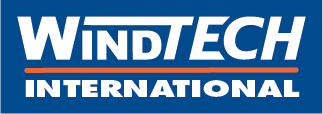On the basis of its audited consolidated financial statements, Nordex confirms the preliminary figures for 2013 which it had reported in February. Consolidated sales rose by around 33 per cent to € 1,429.3 million (previous year: € 1,075.3 million), with return on sales widening to 3.1 per cent.
Consolidated profit after interest and taxes amounted to € 10.3 million, compared with a loss of € 94.4 million in the previous year, which arose mainly as a result of exceptional expenses in connection with the strategic realignment of the Group. The gross margin expanded from 21.4 per cent to the planned level of 22.6 per cent in 2013. This improvement reflects operating measures such as cuts in the cost of materials of an average of around € 100,000 per turbine, more profitable contracts with new products and more professional execution of projects. Turbine assembly output rose by 48 per cent to 1,342MW, while installations of new wind turbines increased by 36 per cent to 1,254MW. The management board projects a further increase in sales of up to € 1.5 billion for the current year, which is almost fully covered by the order backlog. The company is targeting an EBIT margin of between 3.5 and 4.5 percent for 2014, supported by further progress in their cost-cutting programme and the commencement of series production of their new Delta product platform.










